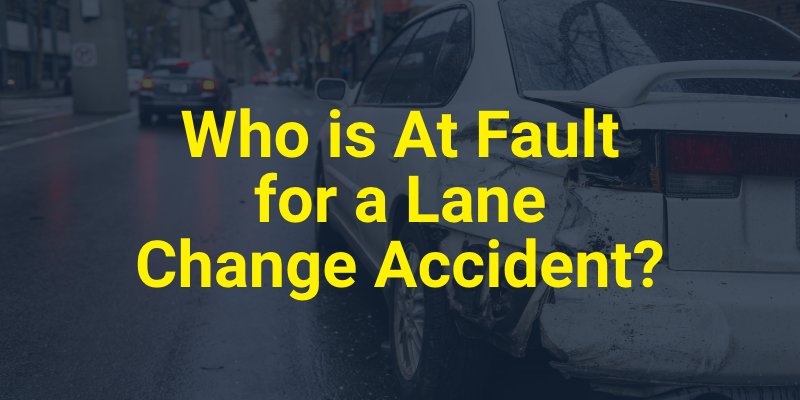Determining fault in a lane change accident can be complex, but it’s essential for insurance claims or personal injury lawsuits. It involves analyzing evidence such as witness statements, traffic laws that may have been violated during the maneuver, and other evidence of liability.

In lane change accidents, identifying the at-fault party is central to pursuing fair compensation. Liability can rest with several parties depending on the circumstances of the incident. Here are potential liable individuals or entities:
The Driver Making the Lane Change: If this driver did not properly signal or check their blind spot before changing lanes, they’re likely to be considered at fault.
Another Motorist: Another driver could be at fault if they were speeding, driving erratically, or engaging in any form of negligent behavior that forced an evasive lane change, even if this driver wasn’t physically involved in the crash.
A Vehicle Manufacturer: If faulty vehicle components like defective brakes contributed to an inability to complete a lane change safely or avoid a collision initiated by another’s action, the manufacturer could be responsible.
An Employer: In cases where a driver is operating under the scope of their employment during the accident, such as a commercial truck or delivery driver, their employer may be held liable due to vicarious liability or negligent hiring practices.
If you’ve been involved in a lane change accident and are dealing with the question of who is at fault, obtaining skilled legal assistance can make all the difference.
Determining fault in lane change accidents involves a meticulous evaluation of evidence, applicable laws, and the circumstances leading up to the incident. Here’s an outline of the steps typically undertaken:
Collecting and Analyzing Evidence: This step involves gathering all possible evidence, including dashcam footage, traffic surveillance videos, witness statements, and the police report. This evidence provides critical insights into the actions of each party involved in the accident.
Examining Applicable Traffic Laws: Lawyers and insurance adjusters review the traffic laws relevant to lane changes in the jurisdiction where the accident occurred. This includes laws related to signaling, right-of-way, and the use of lanes.
Recreating the Accident Scene: In some cases, experts may recreate the accident scene to understand the dynamics of the collision better. This can involve using forensic analysis and simulations to evaluate the positions and movements of the vehicles involved.
Assessing Driver Behavior: The behavior of all drivers involved is scrutinized for any signs of negligence or violation of traffic laws. This includes speeding, erratic driving, failure to signal, or not properly checking blind spots before making a lane change.
Evaluating Vehicle and Road Conditions: The condition of the vehicles involved and the road itself can play a significant role in determining fault. For instance, if poor road conditions contributed to the accident, local government entities might be responsible.
Through these steps, lawyers, courts, and insurance companies collaborate to piece together a comprehensive understanding of the accident, ultimately determining which party or parties bear fault.
If you’ve been involved in a lane-change car accident and believe you were not at fault, it’s crucial to have an experienced Mesa accident lawyer on your side. Contact us today to schedule a free consultation.